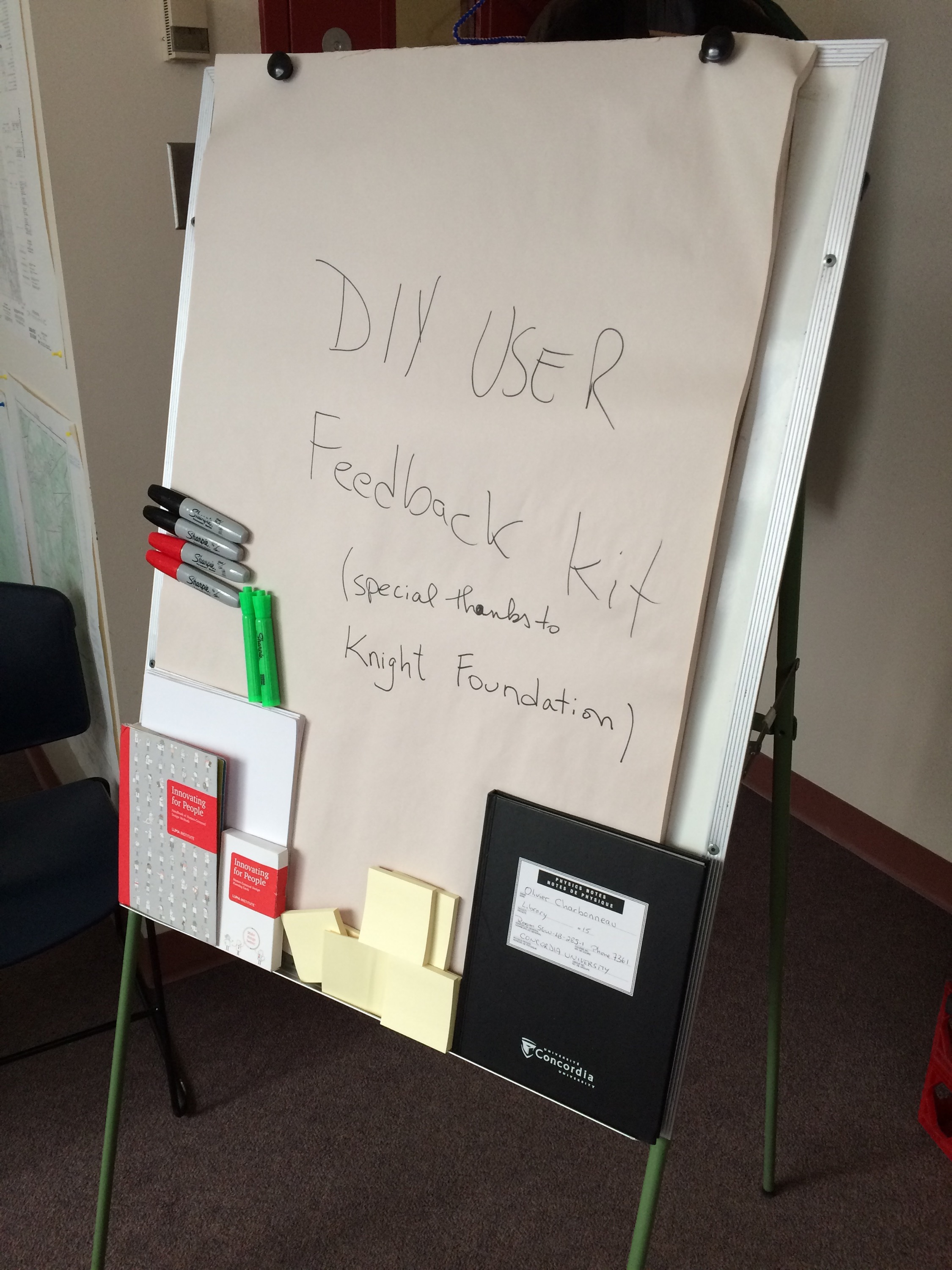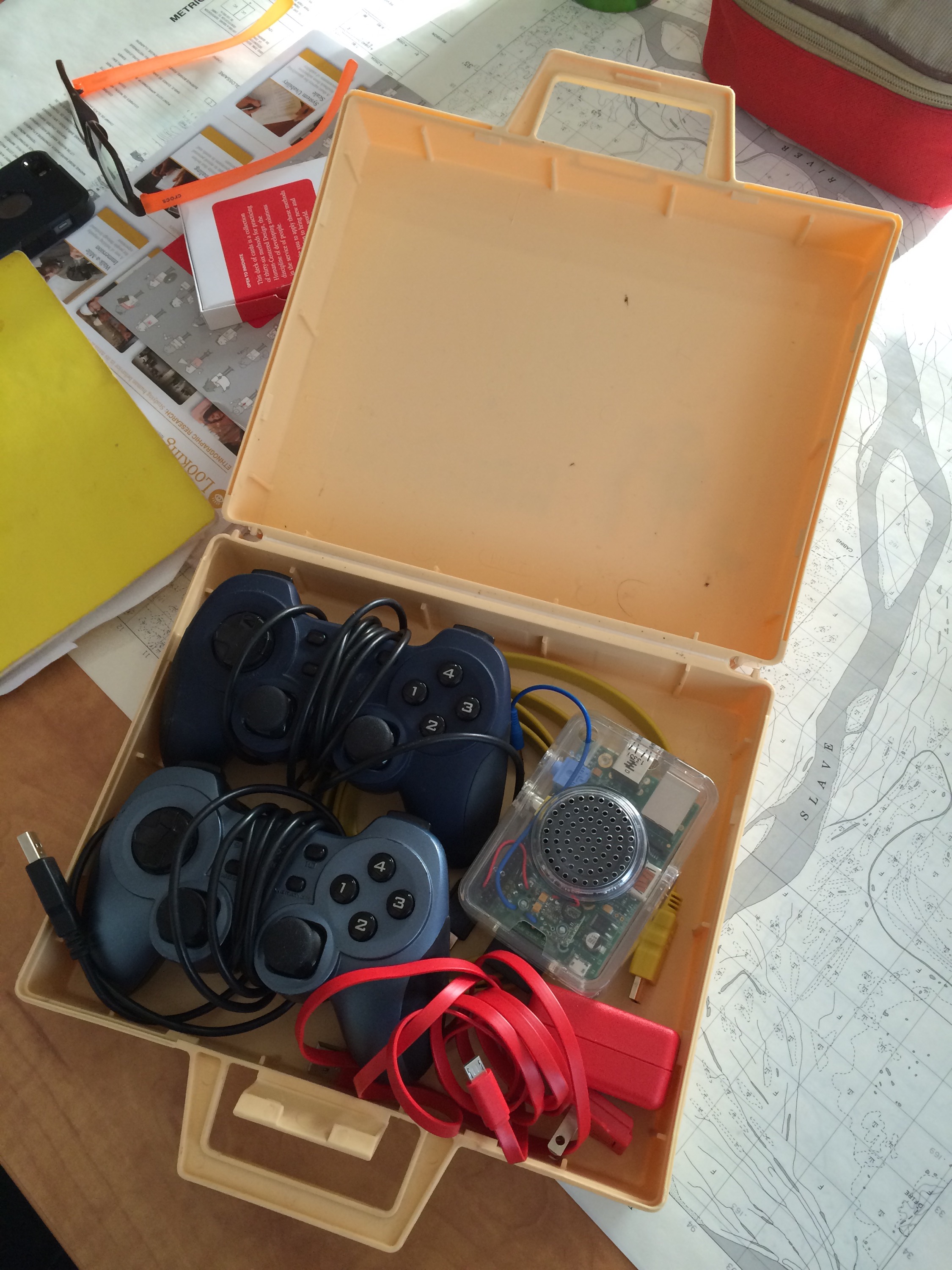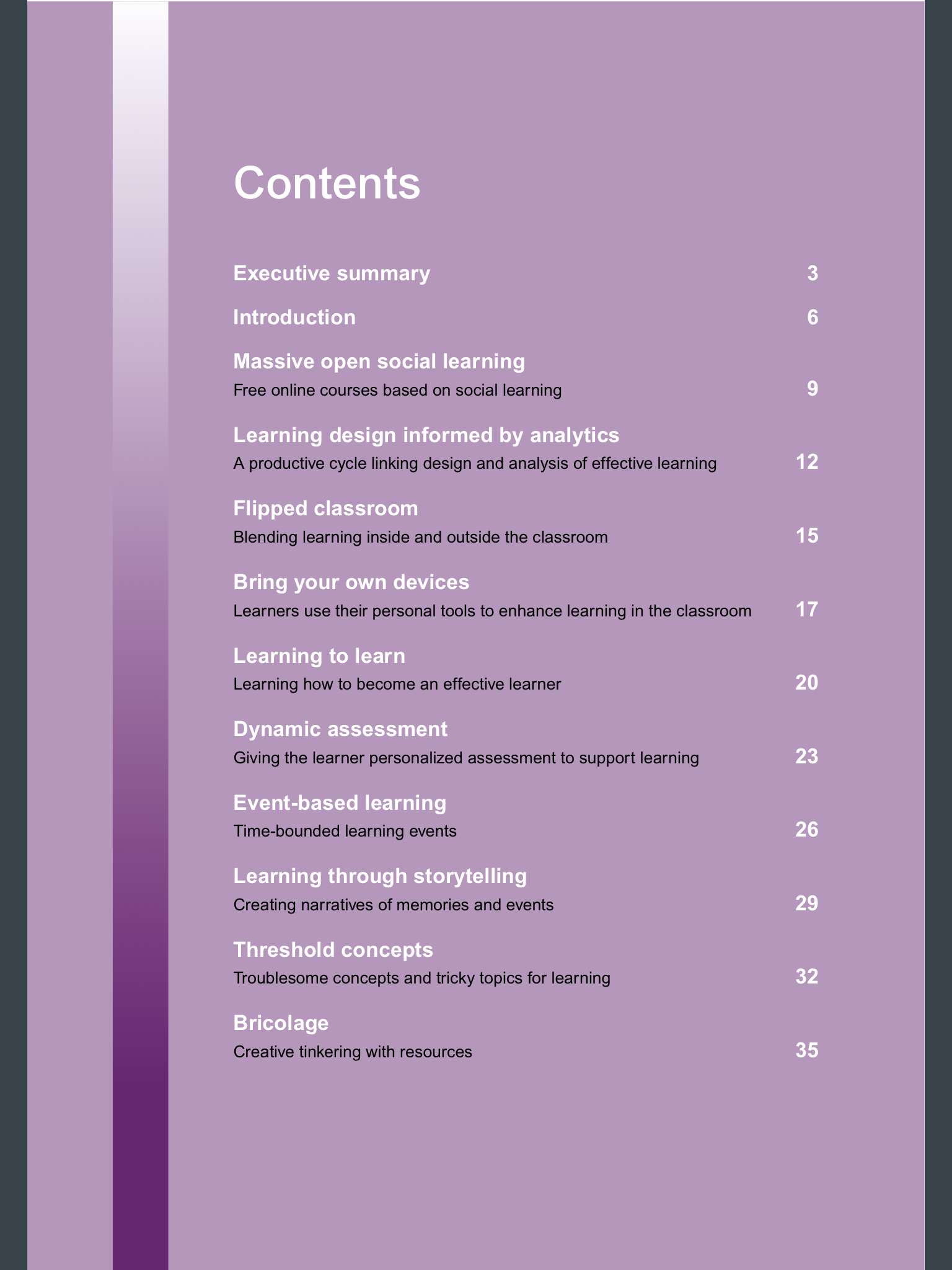Inspiration
Inspiration
Rebooting the licensing games for libraries initiative
Olivier Charbonneau 2019-03-29
Following the Microtalk I gave last Wednesday at TAG, I wanted to thank everyone for their interest and comments. As I reported, I learned the day before the Microtalks that we did not secure funding to relaunch the licensing project through the Story Bikes idea. Arguably, I was really interested in looking at the legal issues of that project… which bring me to the reason I’m writing this post. Did anyone say PIVOT? 😉
As a librarian and doctor-of-laws*, the problem(s) I seek out in my research involve(s) complex institutional arrangements within the realm of information, arts and culture. Games (and anything in the general area of new-ish complex-ish copyrightable works, mostly digital but not exclusively) are my preferred object of study and my preferred subjects are libraries and the environments they subsist in (Cities, Universities, School Boards, Prisons, and yeah, mostly any state-like institution you can think of). The vector linking my object(s) and subject(s) are legal arrangements fostered through institutions like markets, firms (old school Coasian classics, but also newer ones – from the perspective of Western thought – and their correlating mirror image, namely) commons or algorithms (full disclosure: I am a cyberneticist dabbling in socioeconomic theories in the post-modern sense, but I can easily “code switch” as I routinely have to interact with people working on positive or natural theories of law, e.g.: mostly lawyers – I am also a librarian, so I have to be conversant on a wide array of theoretical, conceptual, methodological and analytical approaches in any scientific field – any and all ideas welcome in my Thought Bazar).
Many existing digital platforms ward off libraries from acquiring content (think Steam, iTunes, Google Play and their ilk). Québec and other jurisdictions also have some stringent regulations applied to how certain libraries can acquire content. My working hypothesis (fear!) is that this platform & regulatory “double punch” will render Libraries KO in the digital world. Remember, without libraries (and archives and museums – collectively referred to as LAMs), society does not have many alternatives for us to consume content beyond buying it on a market… unless you consider piracy or the creation of original content as alternatives, but do they really allow for the participation in an open democratic society? I position libraries as an alternate institutional arrangements “feeding off” markets but eliminating market failures (citizens too poor to buy a game) or negative externalities (not knowing about the existence of a great game) as well as power asymmetries (incapacity to join/participate a social group because one lacks knowledge/agency). Certain types of works and many digital markets exclude libraries, which, in turn, excludes so many more… (sigh)
As far as I’m concerned, indie games represent the PERFECT STORM for my research… I feel that if I can get indie games in libraries, I will have made my humble contribution in minding these gaps…
Despite the very temporary setback of not getting the grant for the Story Bike idea, I remain unshaken in my resolve to get more indie games (and, more broadly, informational, cultural and artistic copyrighted works) in libraries, as my personal social hack of existing institutional networks for the betterment of a plurality of voices and expressions in our crazy world.
I know TAG has always been active with libraries through the amazing Arcade 11 initiative – this ongoing event is what sent me on this research path so I must recognize the essential work undertaken to keep the relationship with Libraries active! I am hoping to go deeper in the games in libraries thread. Please contact me if this interests you !
Information Technology Inspiration
Great presentations on Visualization Walls
Olivier Charbonneau 2015-05-19
On the subject of visualization walls, this recent presentation from CNI gives some great ideas and information.
[youtube https://www.youtube.com/watch?v=AfZ_1Afj3WI]
I also liked this one:
[youtube https://www.youtube.com/watch?v=9mlLpkg6KEM&w=560&h=315]
Assessment Inspiration
DIY User feedback kit for the Indie games licensing for libraries project
Olivier Charbonneau 2015-03-05
Aussi en français: http://www.culturelibre.ca/tag/knight/
Follow the evolution of this project here: http://outfind.ca/tag/knight/
Last year’s Arcade 11 brought an interesting mix of librarians, indie games developers as well as games scholars. Through conversations and exchanges of views, it quickly emerged that libraries required alternative models to make independent games available through their digital collections.
Purchasing born-digital copyrighted materials is a strong and emerging trend in libraries worldwide, but “general public” methods of dissemination do not offer the licensing and technological terms libraries require (Libraries cannot acquire born-digital materials from iTunes, Google Play or Amazon as it contradicts the licensing terms of these systems).
In that sense, the TAG team have set out to devise various prototyping models for the licensing and circulation of independent video games at libraries. The Knight Foundation (thank you so much!!!) has funded the creation of a video game console, which the prototype will be devised using over-the-counter inexpensive micro-computer components (with assistance from District 3). We will tap into the pool of graduate studens to build a seed collection of games for libraries as well as articulate some key knowledge points all librarians should know about digital games. Finally, we expect to test whether libraries are open to the idea of having these consoles circulate to users of their library system.
One of our team members thought of getting on-the-fly feedback from parents & kids visiting Arcade 11, our TAG (games) research center open house today & tomorrow… This week is reading week in the Province of Québec, and most k-12 kids are on vacation, so parents scramble to find cool activities to do with their kids. This is the perfect opportunity to great feedback from people visiting our space at Concordia Univerisity in Montréal!
Here is the kit I scrambled together by raiding the supply cabinet…

Also a pic of our concept prototype (version 0.1 or pre-pre-pre alpha) …
(Indie games licensing for libraries project)

… some folks playing at Concordia U’s Arcade 11

Aussi en français: http://www.culturelibre.ca/tag/knight/
Follow the evolution of this project here: http://outfind.ca/tag/knight/
Blended Learning Guidelines - recommendations Information Technology Inspiration Open education
Report on 10 trends that can transform education
Olivier Charbonneau 2014-11-21
A new report from the UK highlights 10 trends or new techniques in education that may have a profound impact on how we teach and learn. Academics from the Institute of Educational Technology and the Faculty of Mathematics, Computing and Technology at The Open University offer us the Innovating Pedagogy report, the third such report released to date.
Here is the outline:
Massive open social learning : Free online courses based on social learning
Learning design informed by analytics: A productive cycle linking design and analysis of effective learning
Flipped classroom: Blending learning inside and outside the classroom
Bring your own devices: Learners use their personal tools to enhance learning in the classroom
Learning to learn: Learning how to become an effective learner
Dynamic assessment: Giving the learner personalized assessment to support learning
Event-based learning: Time-bounded learning events
Learning through storytelling: Creating narratives of memories and events
Threshold concepts: Troublesome concepts and tricky topics for learning
Bricolage: Creative tinkering with resources

Information Technology Inspiration
What are libraries good for?
Olivier Charbonneau 2014-11-04
Interesting article from EDUCAUSE called Libraries as Enablers of Pedagogical and Curricular Change by Joan Lippincott, Anu Vedantham, and Kim Duckett. Here is the abstract:
Key Takeaways
Academic libraries are increasingly adding multimedia production facilities and other technology- and service-oriented spaces as part of overall structural renovations.
Although such remodeled spaces offer tremendous opportunities to support an institution’s pedagogical objectives and its faculty’s desire for innovative course assignments, how these opportunities can be realized is seldom discussed.
As examples from two institutions show, academic libraries can both spur and support innovation in pedagogy and curriculum by actively linking these innovations with library spaces, technologies, services, and staff members.
This is great insight into what libraries can stay relevant with developments in technologies.
Information literacy Inspiration
Dinosaurs explain proper searching
Olivier Charbonneau 2014-09-25
From our friends at the University of Sidney down under:
[youtube https://www.youtube.com/watch?v=Oa66AxTbjxA&w=560&h=315]
Information literacy Inspiration
Awards for library instructors
Olivier Charbonneau 2014-09-22
The Library Instruction Round Table (LIRT) or the American Library Association has announced the opening of two award nominations, one for a librarian and another for a library. Deadline is January 15th 2014.
Blended Learning Information Technology Inspiration
Four ideas to reshape the university with IT
Olivier Charbonneau 2014-09-16
I really enjoyed this short clip from the good people at Educause about 4 ideas to reshape higher ed:
[vimeo 105581244 w=500 h=281]
This is the gist of the talk:

I also really enjoyed this paper about three possible futures for higher ed: one where universities are either virtual or blended; one where digital technology offers a kind of renaissance of creation where storytelling, game design and social media seamlessly integrate into a learning experience; and the one where health care takes over (I didn’t like that one so much).
Information Technology Inspiration Librarianship
Gazing into the cristal ball: NMC Horizon report for libraries
Olivier Charbonneau 2014-08-20
The New Media Corporation (NMC), in collaboration with the University of Applied Sciences (HTW) Chur, Technische
Informationsbibliothek (TIB) Hannover, and ETH-Bibliothek Zurich, announces the publication of the NMC Horizon Report: 2014 Library Edition (PDF, 56 pages).
This report outlines the technicological changes as well as the solvable, difficult and wicked challenges facing libraries in the next 5+ years. For example, under trends affecting libraries in the next 2 years, they cite the increasing focus on research data management for publications and the prioritization of mobile content and delivery.
Under “solvable” challenges, they indicate embedding academic and research libraries in the curriculum and rethinking the roles and skills of librarians.
I’ve followed these Horizon repprts before and I am happy to now see a report on libraries. The education ones provided for interesting matter to reflect upon.
Inspiration
Instruction meets the carnival
Olivier Charbonneau 2014-04-15
Yesterday was my home institution’s Librarians’ Forum – a very interesting mix of new and not so new librarians presenting their ongoing research projects, held mid-April for the past 12 years.
There were many fascinating research projects presented, but one of them struck a chord. My colleagues Rosarie Coughlan, Information Literacy Librarian, & Isabelle Roy, Special Projects Manager & Architect both at Concordia University Libraries were presenting on the various semi-directed focus group sessions that aimed to design our new classrooms in the Webster Library. I remember being invited to such a session but I had to rush out because of an emergency.
So, here is my unsolicited rather off the wall thoughts on the topic of “dreaming up a classroom – no budget restrictions” under the theme of instruction meets carnival.
What is more fun than a carnival? I remember when it came to town, I would love the bumper cars and the small, rickety roller coasters one could ride for a few tickets. So, if PT Barnum could design a classroom, here is what it would look like.
This spacious room with very high ceiling would have many desks, say about 50 0or 60. Each one would look like a bumper car, single seat narrower at the front and larger in the back, like a triangle with the front cut off (trapeze). Instead of a steering wheel, you would have a console comprised of a screen, keyboard, joystick, camera, microphone and speakers. There would also have enough room for a book, tablet or laptop on each side of the keyboard (it could be fixed to the console table).
These pods would be mounted on a network of rails (you still need wires to get electricity to the IT equipment, one could get batteries on these pods, but then you get into recharging & capacity issues). These rails would actually be mounted as a network of square tiles with perpendicular ovals rails in the middle to allow for lateral movement. This flexible smart grid would be the “under-floor” and would allow pods to rotate in their axis or move around the room in a fluid motion.
The floor would have a synthetic self-cleaning and regenerating grass-like covering, soft to the naked foot but robust enough to survive the wear and tear of the rails from the pods. It would smell like grass too if you stepped in it. Fresh grass is just the happiest smell.
Because of their shape, pods could come together to form hexagons or octagons of inward-facing occupants, allowing for group work. They could also form a square matrix and face in any direction. Actually, because of the shape of the networked tiles-as-rails, they could form any classroom structure.
Pods would be equipped with detachable wall & ceiling mounted zip-lines attached to the torso of occupants. Occupants would be able to leap from their pods to traverse the room in any fashion, assisted with cervo-motors and a really small, cool, hand-held controller.
All the walls are actually retractable smart glass that can become clear or opaque as well as become a projection space, a tactile smart screen. They could also be embedded with two-way capture technology, tiny cameras every few decimeters to record motion around them, but also an easy occupant-controlled “print-screen” function. So, you can use your finger or any object to write on these glass-screens, but also project, capture and share content on them or in front of them.
The environment would be controlled by really smart software. Heuristics could determine the best temperature, humidity or air pressure based on historical or actual outside weather, season or based on the biometrics from occupants (heart-rate, temperature, clothing they are wearing, etc.) or any other aspect (elections? winning local sports team? earthquake?) using the capture devices embedded in the smart glass-screen or open web datasets.
Of course, the synthetic grass floor-covering would emit the appropriate smell based on the heuristics of the environmental control (wet soil in spring, chlorophyll for summer, damp hay for fall or even snowy cool).
The classroom would be at the ground floor of the building or close to a busy passageway. Smart-glass walls are retractable so that passers by can look into or engage with the occupants of the classroom.
All pods double as podiums or desks. They are all equal but successful completion of classroom objectives or learning outcomes allow for badges that allow the occupant to pimp their pod. Of course, pods have an customizable exterior made of smart materials that would allow to show badges or tchatchkas earned from the learning process. If occupants misbehave, so would their pods, disabling certain features or even ejecting them (remember the zip-lines?) if they really fall out of line.
You could also have Pods without occupants. These could be rail-mounted or not – in that case, they would be robots. They can deliver print jobs (old fashion paper or 3D printouts of objects) as well as refreshments or other equipment.
So, there are a few examples from fictional works. Remember the flying pods in the Imperial Senate from the Star Wars saga (Episodes 1-3)? I also like the devices soldiers use in Attack on Titan to move around. Also, I’d like to thank the late French Bande dessinée articst Moebius (Jean Giraud) for his graphic style of science fiction. And of course, just classic bumper cars and roller coasters…




